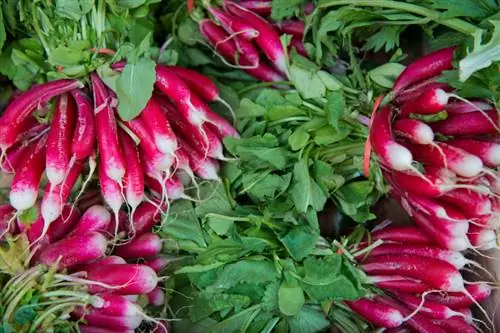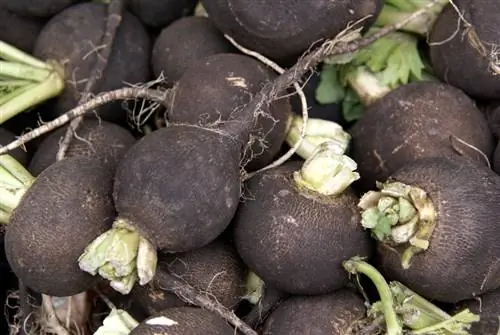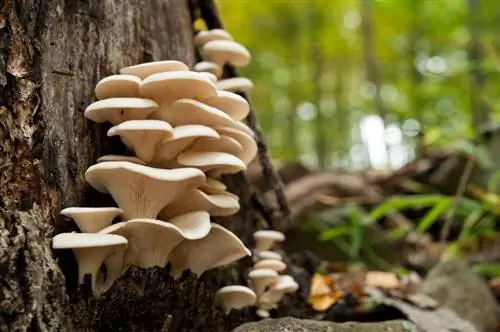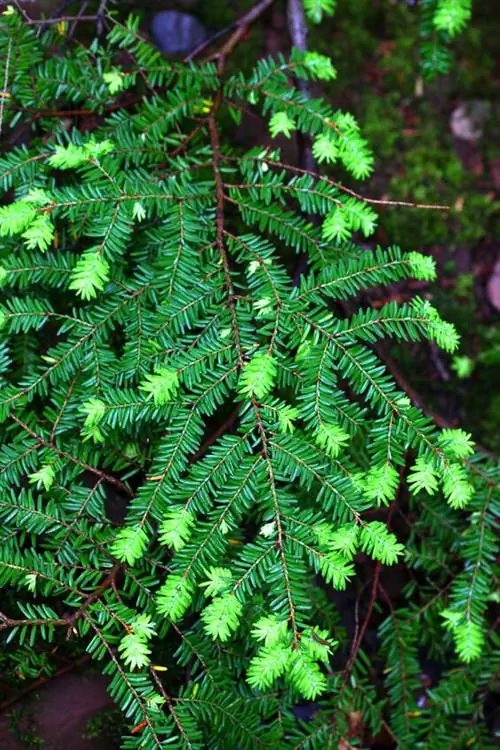- Author admin [email protected].
- Public 2023-12-16 16:46.
- Last modified 2025-01-23 11:19.
Radish comes in a wide variety of colors and shapes: white, pink, red, violet or black; round, oval or pointed; small, medium, large. All species have one thing in common: the spicy, spicy taste for which radishes are valued.

What different types of radish are there?
Radish types can be divided into summer and winter radishes as well as small and large varieties. Well-known summer radish varieties are Easter Greetings pink, Half-Long White Summer and Neckarruhm. Winter radishes include Icicle, Munich Beer, Rex, Round Black Winter, Neptune and Mantanghong F1.
Overview of radish types
First of all, a distinction is made between summer and winter radishes. The radishes are also divided into small and large ones. The small radishes primarily include radishes. The large radishes are usually white, red or black winter varieties that are sown at the end of June and harvested before the first frost.
variety selection
Many fast-growing, bolt-resistant and robust summer and winter varieties are available in specialist shops. In terms of taste and ingredients, the many different types of radish are pretty close to each other. The difference is in shape and coloring. Storage life can also be a crucial factor when choosing a variety to grow in your own garden.
Summer radishes
- Easter greeting pink, half-long, bright dark pink, very early variety
- Half-long white summer, approx. 20 cm long, white, mildly spicy,
- Neckar glory, approx. 15-20 cm long, white, early variety,
Winter radishes
- Icicle, actually a very long type of radish, white, cylindrical, tender and spicy flesh
- Munich beer, medium-sized radish, pure white, rounded at the top, tapered at the bottom, he althy snack with beer
- Rex, half-long, white beets, smooth and evenly shaped, mildly spicy
- Round black winter, small balls, black on the outside, spicy, firm flesh, known for good storage properties
- Neptune, white, conical, mild, high tolerance to radish blackness
- Mantanghong F1, approx. 25 cm long, the size of a tennis ball, white on the outside, red on the inside, mildly nutty
The summer varieties are usually sown between February and June according to the information on the seed bag. Winter varieties are usually sown from the end of May to the beginning of June. The seeds are suitable for growing on the windowsill or in the greenhouse, and if the outside temperature is permanently above 12 °C, they can also be sown immediately outdoors.
Tips & Tricks
In Bavaria's nurseries, local varieties are often cultivated and grown. The seeds are mainly available online. Browsing and searching is worth it: you will discover a variety of colors and shapes that will amaze every hobby gardener.






